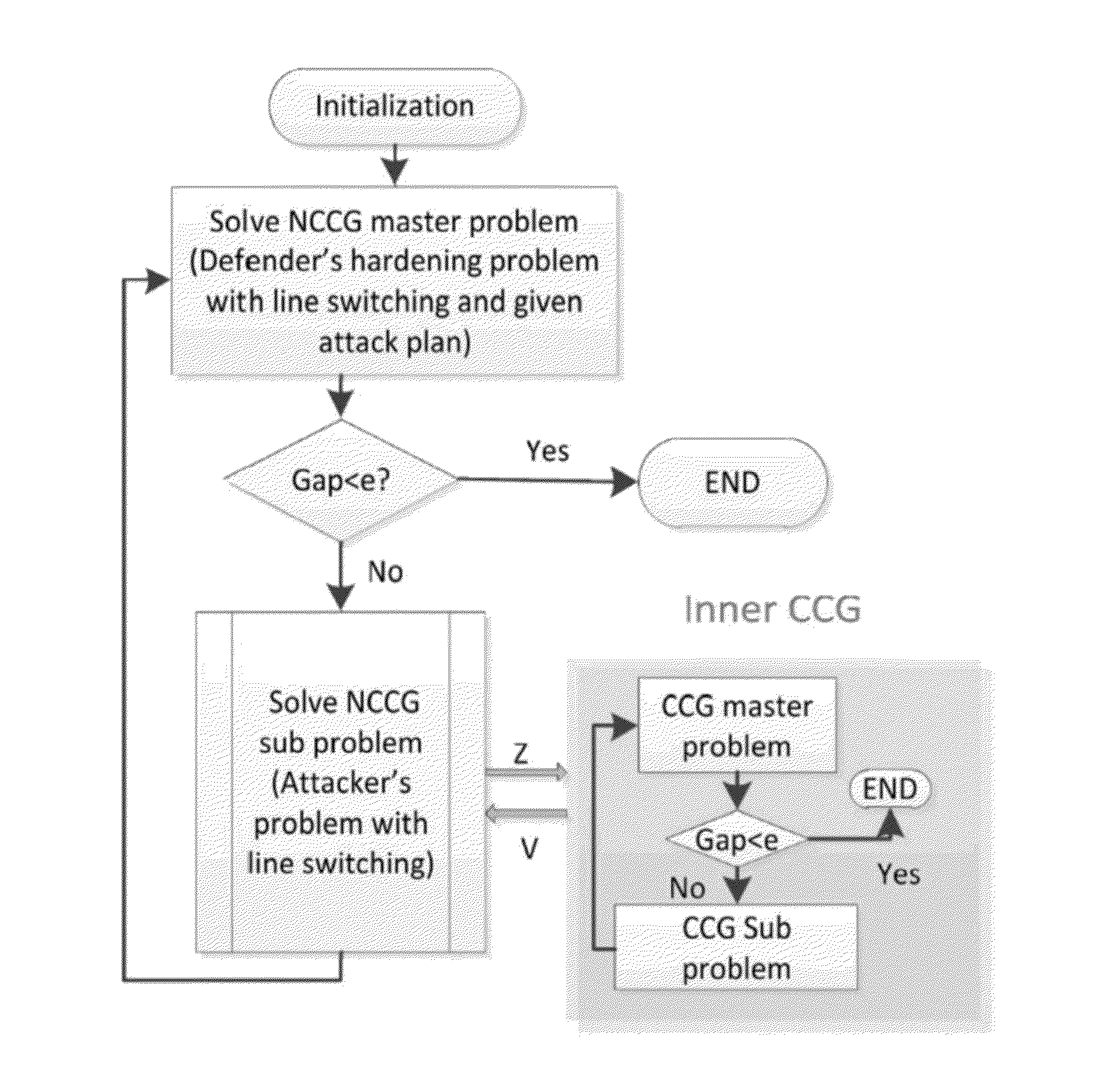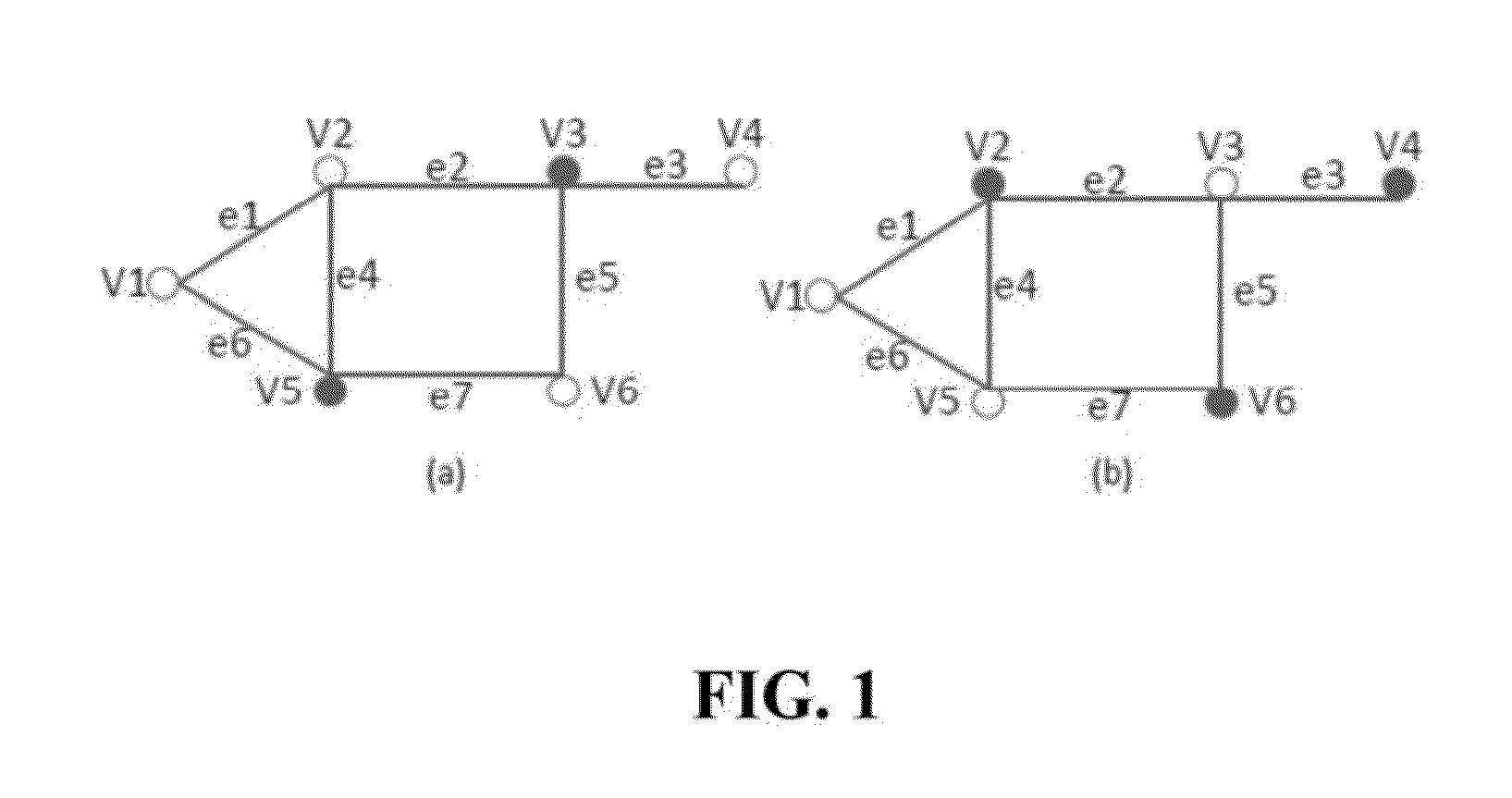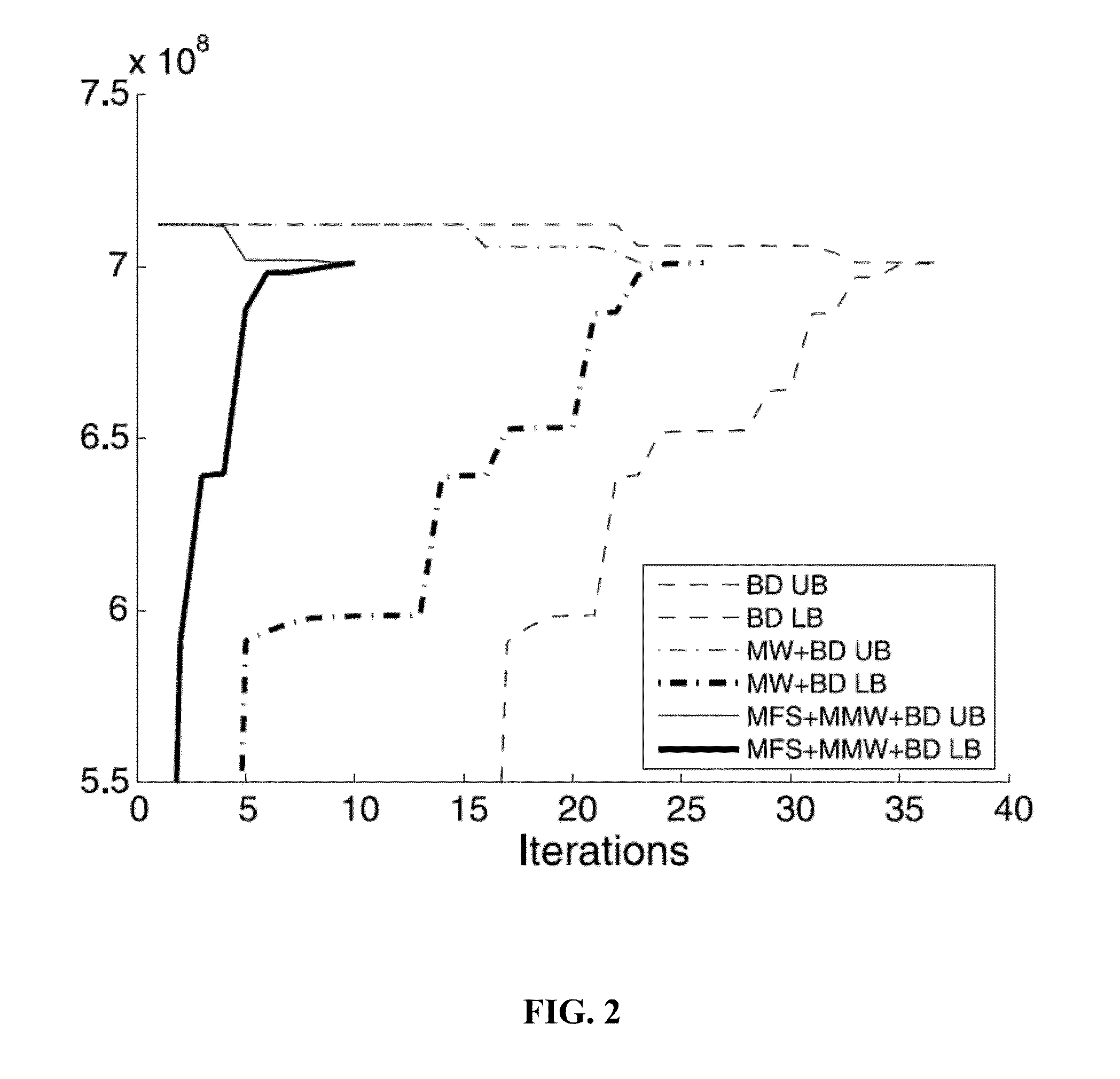Column and constraint generation method for optimal strategies
a generation method and optimal strategy technology, applied in the field of columns and constraints generation methods for optimal strategies, can solve problems such as major concern of power grid vulnerability, and achieve the effect of mitigating damag
- Summary
- Abstract
- Description
- Claims
- Application Information
AI Technical Summary
Benefits of technology
Problems solved by technology
Method used
Image
Examples
example 1
[0136]Referring to FIG. 1A, an example of a graph G with γ(G)=2 is shown. If the budget constraint is ΣeεEye3 is interdicted (by, e.g, guessing or a heuristic algorithm), γ(G {e3})=3=γ(G)+L, therefore ye3=1 can be claimed to be the global optimal. If the budget is ΣeεEye<2, however, it is difficult for heuristic algorithms to confirm global optimality.
[0137]Iteration 1. Take E(y1)={e1, e2}, then D1=V(x1)={v1, v2} shown in red in subgraph (a). Update yx=y1 and η=2. And we have {Fn(D1):∀uεD1}={Fn(D1): uε{v1, v2, v4, v6}}={{e6}, {e2, e4}, {e3}, {e5, e7}}. Since the following system
P={∑e∈Eye≤2,?ye∈{0,1},∀e∈E.}?indicates text missing or illegible when filed
is feasible, i.e., y3=y6=1 and ye=0 for other edges eεE, a desired w is obtained. In fact, the constraint (6) can be linearized as follows.
y6+y8+y3+ye≧1, y8≦y2, y8≦y4
y9≦y5, y9≦y7, y8, y9ε{0,1}
[0138]In the following iterations, linearization is omitted for simplicity. Also, for any nonlinear constraint (one such constraint per iteratio...
example 2
[0145]A computational study was conducted to show / compare the effectiveness of methods of the subject invention, particularly the pure integer approach (e.g., Theorems 1 and 2) and the mixed-integer approach (e.g. Theorems 3 and 4). All instances were complex graphs with multiple edges and loops. Table 1 shows the performance of the pure integer approach for a graph with 30 vertices and 50 edges with and without the improved upper bound. The effectiveness of the algorithm for two medium-sized graphs with 300 vertices and 500 edges is shown in Table 2. The results for the two medium sizes may be slightly biased since the upper bound provided in Lemma 1 is optimal for the two instances.
TABLE 1Results for Pure Integer ApproachTime(s) Time(s) Optimal BWithout IUBWith IUBObj Value00.10.2810.90.3926.50.410341.51.9114414.013.0115>100025.012
TABLE 2Results for Pure Integer ApproachOpt Obj ofTime(s) ofOpt Obj ofTime(s) ofBInstance 1Instance 1Instance 2Instance 20880.3860.31890.3870.62900.3880...
example 3
[0147]Multi-start Benders Decomposition (MSBD) is a common existing method for solving power system interdiction problems (see, e.g., Delgadillo, Arroyo, and Alguacil in IEEE Power Systems, 2010). This method was compared to a C&CG algorithm according to an embodiment of the subject invention. The C&CG algorithm was as follows:[0148]Step 1. Set LB=−∞, UB=+∞, h=0, U=, and an optimality tolerance ε.[0149]Step 2. Solve the partial single-level formulation I (or II) (as the master problem). Derive an optimal solution (y*h, η*h) and update LB=η*h.[0150]Step 3. Solve the lower level problem max(z,x)|y*h (as the sub-problem) and update upper bound=min{UB, opt(y*h)}.[0151]Step 4. If UB−LB≦ε, return y*h as an optimal solution and terminate. Otherwise, update U=U∪{h}, create new continuous recourse decision variables xh corresponding to the obtained zh (parameter obtained in step 3), update h=h+1, and go to step 2.
[0152]The methods were tested on a problem of an IEEE one-area RTS-96 system, ...
PUM
 Login to View More
Login to View More Abstract
Description
Claims
Application Information
 Login to View More
Login to View More - R&D
- Intellectual Property
- Life Sciences
- Materials
- Tech Scout
- Unparalleled Data Quality
- Higher Quality Content
- 60% Fewer Hallucinations
Browse by: Latest US Patents, China's latest patents, Technical Efficacy Thesaurus, Application Domain, Technology Topic, Popular Technical Reports.
© 2025 PatSnap. All rights reserved.Legal|Privacy policy|Modern Slavery Act Transparency Statement|Sitemap|About US| Contact US: help@patsnap.com



